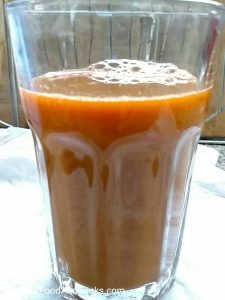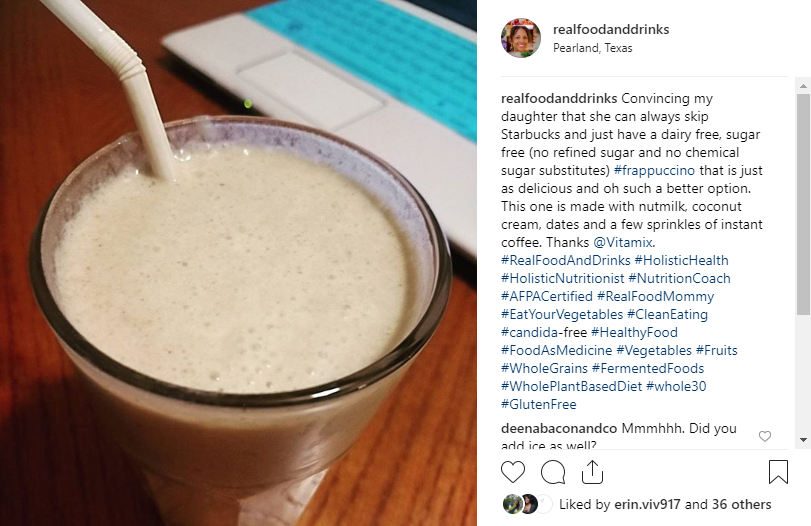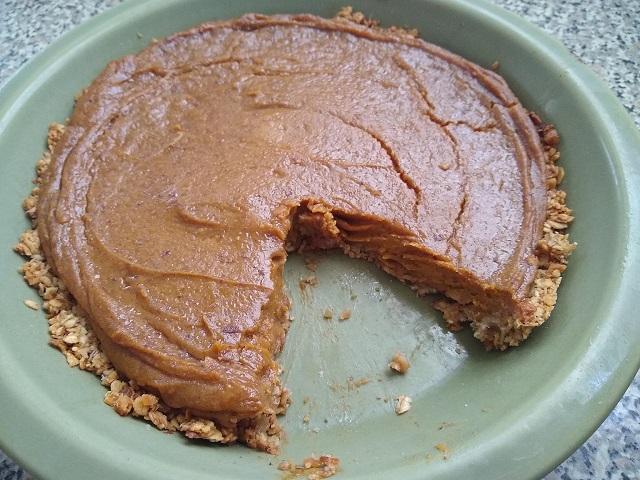
“The abundance of live, uncooked foods flushes your body of toxins, leaving you feeling refreshed, energized and relaxed all at the same time. The pure foods make your skin glow, your hair shine, your breath fresh [due to a cleaner digestive system]… Colds and flue become fewer and farther between; many people report that arthritic joins loosen with renewed flexibility; and gums and teeth become less pront to bleeding and cavities.” (The Juiceman’s Power of Juicing)
“Juicing vegetables renders their life-giving nutrients “body-active” in about 15 minutes. [Compare this to the 6 or more hours it takes to digest the typical American meal which reduces your energy due and leaves you feeling tired due to the energy needed for digesting the meal.] When the body does not have to work hard to digest, guess what? We have more energy. We feel more alive!” (Live Foods, Live Bodies).
I can attest to every benefit in the above quotes. I was first introduced to juicing almost 30 years ago, and I have been an avid juicer (drinking juice almost daily) for the last 10 years.
Yet, I know many people have questions and concerns about juicing, and I’d like to address the top three in this document. So let’s begin.

| Can’t I make juice in my NutriBullet or blender? |
Juice is the liquid nutrient form of fruits and vegetables without the fiber. Juicing requires the use of a special appliance called a juicer. Appliances such as NutriBullets and blenders create smoothies. Of course, to be sure you are getting as many fruits and vegetables into your diet as possible, smoothies make a good addition to your diet just as much as adding juices.
The main difference is that juices contain more nutrients than smoothies when compared ounce for ounce. For instance, an 8 ounce of juice contains liquid nutrients extracted from 1 1/4 pound of fresh produce. Whereas, using 1 1/4 pounds of fresh produce to make a smoothie would result in way more than 8 ounces and way more fiber than one could probably drink due to the need to add enough liquid to create the smoothie when using so much produce.
Therefore, ounce for ounce, you get more vegetable nutrients in juices than in smoothies.
| Juices don’t satisfy my hunger |
The purpose of juices is to get more nutrients. It’s not to serve as a meal replacement unless you are juice fasting or on a specific diet to lose weight. Adding juices in these two situations can make sure that you are receiving the necessary nutrients to fuel your cells. Yet, juicing should be added to your regular meal plans.
| What about fiber? |
But the elimination of fiber from juices allows the nutrients in the fruits and vegetables to enter your body’s cells more rapidly, practically without digestion.
We need fiber, so it’s important that you are eating additional foods to meet your fiber requirements that are found in whole grains, legumes, nuts/seeds, fruits and plenty of vegetables.
To learn about “two more” concerns that people often express, learn juicing tips and the top three reasons why my favorite juice is carrot juice – watch this video.



